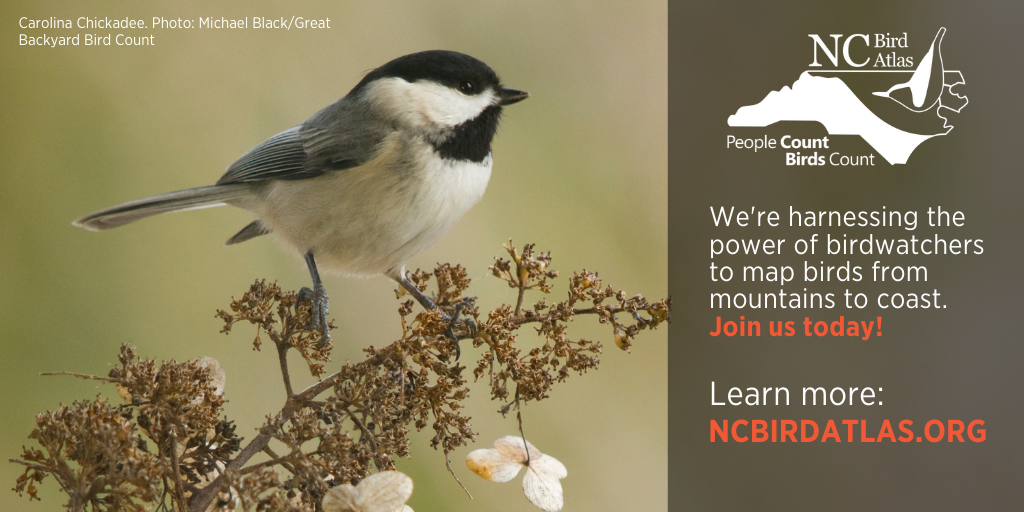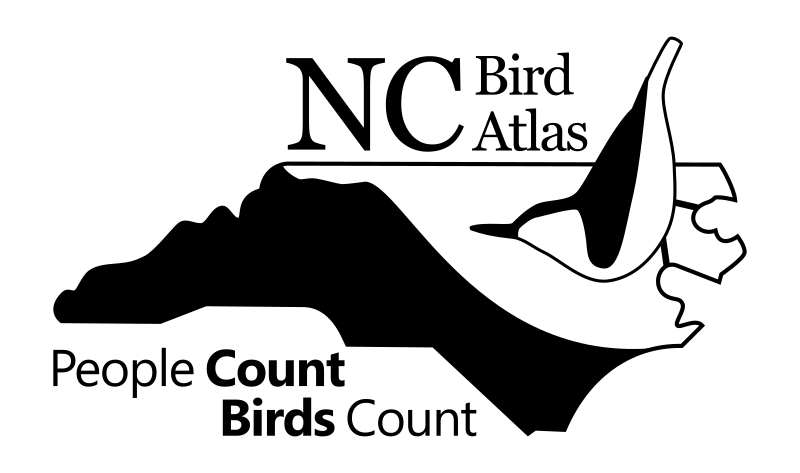
Birds and are the most accessible form of wildlife for people to witness and observe and crucial to the health of North Carolina’s wild, natural places.
Yet, we’ve lost one in four birds since 1970 nationwide, an estimated total of 2.9 billion. Even common species like Dark-eyed Junco (down by 168 million) and White-throated Sparrows (down by 93 million) have declined significantly.
The good news our country has demonstrated that a focused effort backed by support from a broad coalition can result in conservation success.
A bird atlas is a state-wide community science survey that harnesses the power of thousands of birdwatchers to map the distribution and abundance of birds. Anyone can participate, from the casual backyard observer to the avid wide-traveling birder.
The first step is having a detailed picture of birds and what they depend on to be healthy in the state. Through the North Carolina Bird Atlas, we can gather essential information about the current and future distribution and abundance of NC’s birds and prevent birds becoming endangered or even extinct.
To ensure an accurate representation of all bird species, the NC Bird Atlas team has selected priority blocks across the state – regions where volunteers will concentrate their efforts. Each block is approximately 10 square miles. The goal is to collect a detailed log all species that occur on that area of land.
The project’s motto is “People Count. Birds Count.” The NCBA staff is committed to a volunteer team as diverse as our birds. They are listening for diverse voices and birding skills of all levels to carry out this cooperative, large-scale conservation effort.

This project is a fantastic opportunity to positively impact birds and help us learn more about their lives in North Carolina. There’s a number of ways to participate, and we think you’d enjoy whatever winds up being your avenue with it!
Here are some options for getting involved:
An “Atlaser” is just the name for those that collect the data. If you are comfortable with your ID skills and interesting in birding in a new way, this is a great option for you.
It’s important to keep in mind that atlasing is not the same as accurately identifying. Atlasing requires detailed documenting of birds in specific blocks and noting additional information with associated codes, such as breeding and feeding behavior. Although we think this adds a new and exciting element to bird watching, it’s something to keep in mind if you’re considering signing up for a block.
Regional Teams will be the critical eyes and ears on progress, covering every corner of North Carolina. There are 9 regions across the state, each encompassing between 9 to 13 counties. Regional coordinators will be expected to recruit and support volunteers for the Bird Atlas in their region.
This may include giving presentations on the Atlas, writing blog posts, assisting with virtual and in-person (as conditions allow) events. They will also be expected to report to the NCBA Coordinator on a regular basis with progress and issues in the region.
It’s estimated that regional coordinators will spend up to 10 hours per month on this project during the breeding (Mar – Jul) and wintering (Nov – Feb) seasons.
If you are interested or would like more information, please send an email with your name and region of interest to the NCBA coordinator. They will select 2-3 folks based on experience, ability to mobilize skilled, diverse birders, and familiarity with the region.
If you keep up with the Birding Trail, you probably know how much we advocate for birding at all levels of experience. Whether you have a life list of hundreds of birds, or you simply enjoy watching birds you can’t identify in your neighborhood, we encourage you to follow your bliss.
And, if you’re interested in the Atlas but not yet comfortable enough with identification to commit to a block, that’s okay. The project will take place through 2026, so there is plenty of time to grow your identification confidence!
Check out resources like Merlin Bird ID, BirdNET, Larkwire, and several others. Consider experimenting with these top 5 bird identification resources to expand your skills and confidence.
You can help get the word out to others who are interested in birds and conservation by sharing NC Bird Atlas content on social media, with your friends, and at your bird or outdoor recreation club.
Follow the Atlas on Facebook, Twitter, and Instagram. You can also sign up to receive email updates from the Atlas so you can stay up to speed.
If you want to keep diving into the Atlas, enjoy their website where they expand on many of these topics.
However you choose to be a part of this incredible community science opportunity, we want to thank you for your enthusiasm, support, and genuine love for birds. In so many ways, you matter.
People Count. Birds Count.